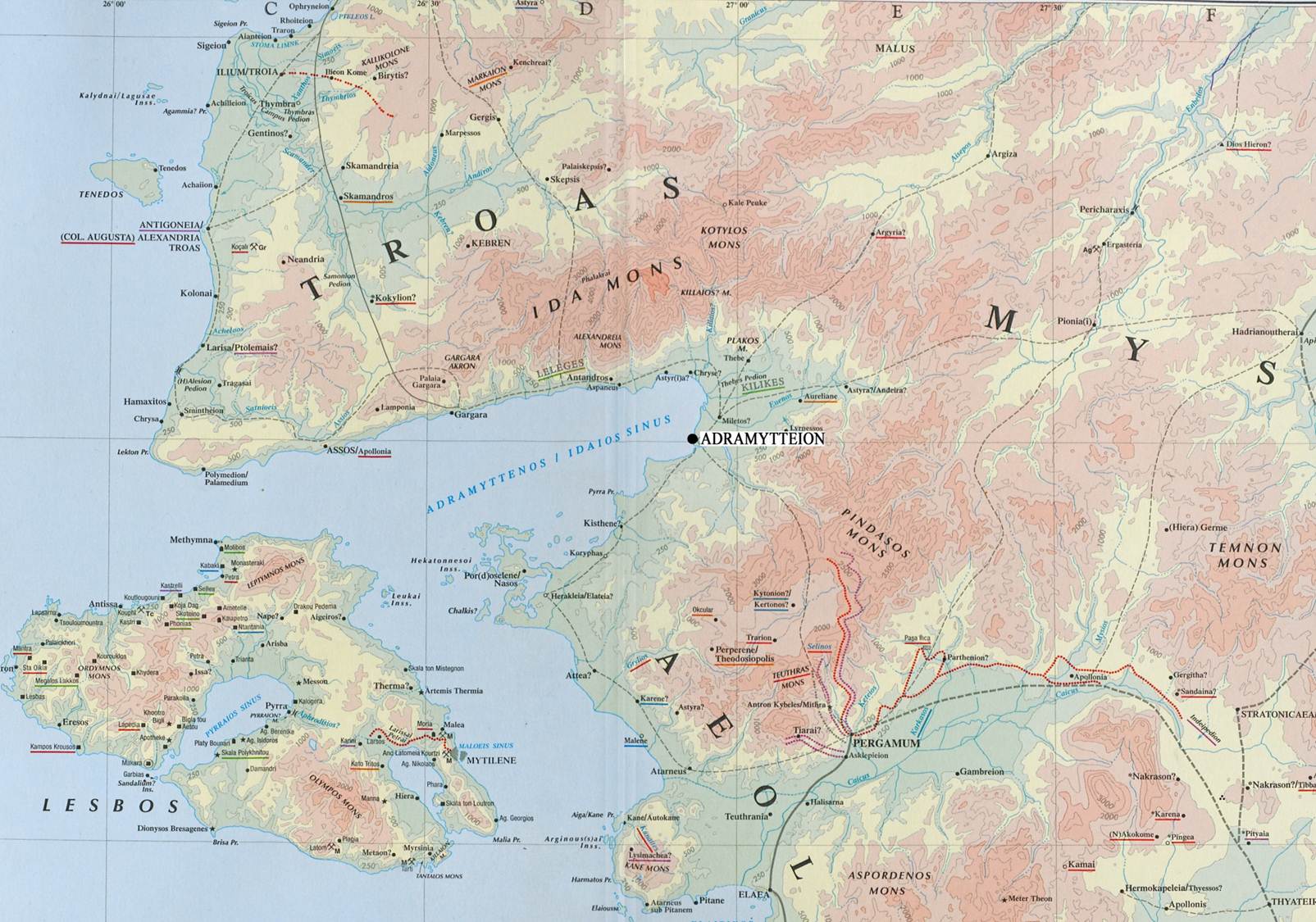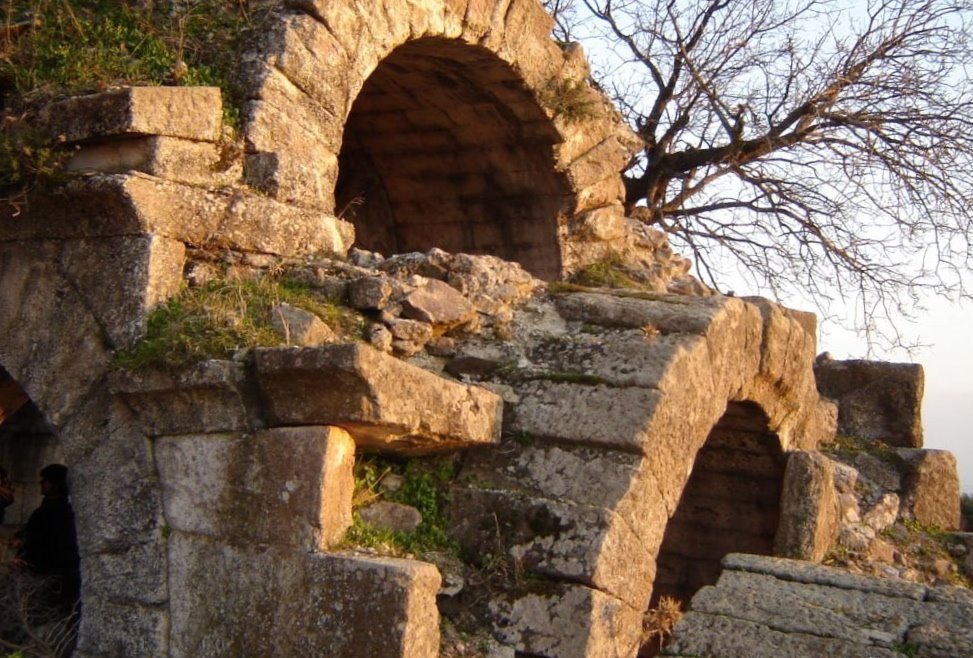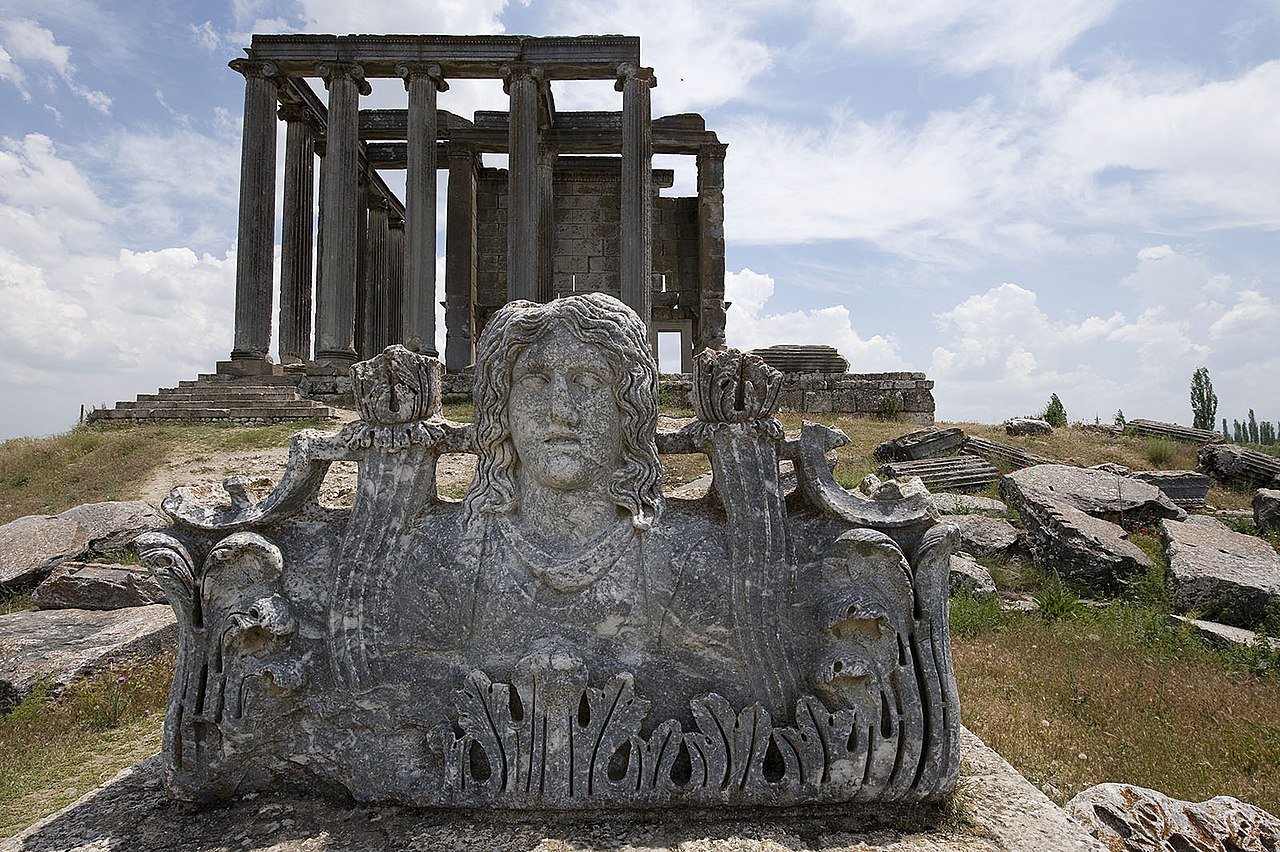Bir zamanlar bir adada yer alan şehir şimdi anakaraya dahil edilerek bir yarımada oluşturuyor. Geleneğe göre Iasos, muhtemelen MÖ 9. veya 8. yüzyılda Argos'tan (Dorianlar) Yunanlılar tarafından kolonileştirildi, ancak arkeolojik kanıtlar Iassos bölgesinin Neolitik dönemden beri yerleştiğini ve büyüklerden biri olarak geliştiğini gösteriyor. Küçük Asya'daki Minos ve Miken yerleşmeleri. Refah Helenistik, Roma ve Bizans dönemlerinde devam etmiş ve kalıntıların çoğu daha sonraki dönemlere dayanmaktadır.
İasos Milas'a 28 km. uzaklıktaki Kıyıkışlacık Köyü içersindeki bir yarımada üzerinde kurulmuştur. Iasos Antik kentinde, 1960 yılından beri düzenli olarak kazı yapılmaktadır. Bu kazılar sonucunda birçok yapı ortaya çıkarılmış ve kentteki en eski yerleşimin MÖ. 3 binyılın sonuna (Orta Tunç Çağı) kadar uzandığı tespit edilmiştir.
Kentin önemli yapıları olan Agora, Bouleuterion, Tiyatro, Akropol, Mozaikli Ev, Artemis Tapınağı, yarımada üzerinde yer alır. Agoranın bulunduğu alanda Tunç Çağı'na ait mezarlar ortaya çıkarılmıştır. Büyük sur , su kemerleri , mezarlar ve Balık pazarı olarak adlandırılan anıt mezar ise yarımadanın dışında yer alan yapılardır.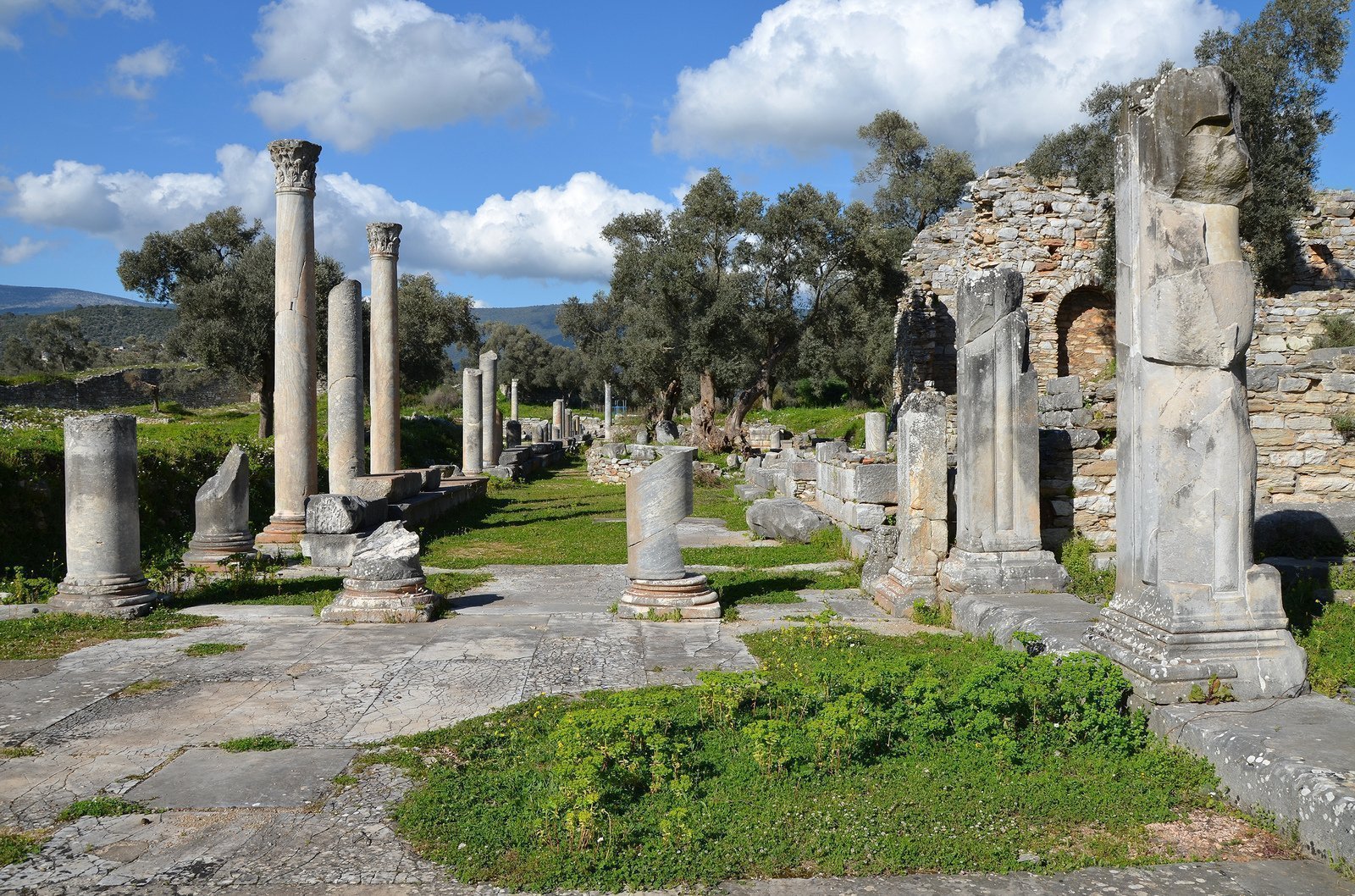
İASSOS BALIK PAZARI AÇIK HAVA MÜZESİ
Halk arasında Balık Pazarı olarak bilinen bu yer, Roma Dönemi'ne ait bir anıt mezardır. Yapı, payeler üzerindeki kemerlerde oluşan bir portiko ile sınırlanmış hemen hemen kare planlı bir alanın ortasında, basamaklı yüksek bir platform üzerinde yükselen ön cephesi dört sütunlu bir tapınaktan oluşmaktadır. Mezar odası bu tapınağın zemininde yer almaktadır. 1993'te Kültür Bakanlığı tarafından restore edilen yapı, 1995'te Balık Pazarı Açık Hava Müzesi olarak ziyarete açılmıştır.
AGORA
Şehrin önemli yapısı Agora kentin düzlük olan kısmında yer alır. Toplam açıklığı 107x87 metredir. Zaman içinde dört girişe sahip olan şimdiki girişi Bizans Dönemi’ne aittir. Bu alanda birden fazla döneme ait yapılar üst üste yer almaktadır. Bu dönemler Erken Bronz Çağı I’den (MÖ 3300-3000) Geç Bizans (MS 1261-1453) Dönemine kadar uzanmaktadır.
Agoranın ortasında çeşitli küçük kutsal yapılar ve sunaklar bulunmaktadır. Alanın dört tarafını çevreleyen portikolar (stoa) MS. 2. yüzyıldaki inşa faaliyetlerinden kalmadır.
Şehir surlarının inşası MÖ. 4. yüzyılda muhtemelen şehrin Hekatomnos sülalesi yönetimine geçtiği döneme tarihlenir. Surlar 2 km. uzunluğundadır. Tepenin güney yamaçlarında, doğal bir teras üzerinde diğerlerine göre çok daha gösterişli bir ev yer alır. MS. 2. yüzyıl’da inşa edilen yapı Hellenistik mimari öğelerini bünyesinde barındırır. Kentteki Nekropolis MÖ. 2 yüzyılın ikinci yarısından MS. 4. yüzyıla kadar sürekli kullanım görmüştür.
İasos'da yapılan kazılarda kentteki en eski yerleşimin M.Ö. 3. bin sonuna kadar uzandığı tespit edilmiştir.Bir zamanlar kenti ziyaret eden müzisyen, tiyatroda bir resital vermiş. Bu resital sırasında balık pazarının açıldığını bildiren çan sesi duyulunca elini kulağına götüren yaşlı adam dışında herkes yerinden fırlayarak tiyatrodan ayrılmış. Yaşlı adamın yanına gelen müzisyen "Bana ve sanatıma gösterdiğiniz saygıdan ötürü size teşekkür borçluyum; çünkü çan sesini duyan tüm dinleyiciler çekip gittiler" demis. "Ne ?" diye haykırmış bunu duyan yaşlı adam, "Yoksa çan mı çaldı? "Evet, neden?" "Öyleyse izninizle efendim..." ve gözden kaybolmus. Strabon bu öyküyü bereketsiz topraktan ürün alamayan İasoslular'ın balığa olan düşkünlüklerini belirtmek için anlatır. Iskender'in 334'te Miletos'u kuşatması üzerine İasos, kente yardım etmeye çalısan Pers donanmasına bir gemi bağışında bulundu. On yıl sonra Ekbatan'da İskender'in silah deposu komutanlığında Gorgos adlı bir İasoslu bulunuyordu. İskender'in ilgisini çeken bir başka İasoslu da yunus tarafından sevilme gibi garip bir yazgıya sahip olan erkek çocuktu.İasos'ta erkek çocukların gimnasiumda çalıştıktan sonra denizde yıkanmalari bir gelenekti. Bu sırada kıyıya yanaşan yunus, çocuklardan birini sırtına alıp, açıklara götürüyor ve sonra yeniden kıyıya bırakıyordu. Bir anlatiya göre bu öyküyü duyan İskender, çocuğu Babil'e getirtip deniz tanrısı Poseidon'un rahibi yapmış. İasoslular bu olaydan, M.Ö. 3. yüzyılda çıkarılan madeni paralarında, kolunu yunusun sırtına atmış biçimde yüzen çocuk tasvirine yer verecek kadar etkilenmişlerdir. İasos antik kentinde 1960 yılından bu yana İtalyan Arkeoloji Heyeti'nce düzenli kazılar yapılmaktadır. Bu kazı çalışmaları sonucunda birçok eser ortaya çıkarılmıştır. Bunlardan agoraya kemerli bir kapıdan geçilerek girilir. Roma Dönemi'nde inşa edilen agoranın dört tarafı revaklarla çevrilidir. Agoranın güney batısında bouleterion yapısı yer alır.
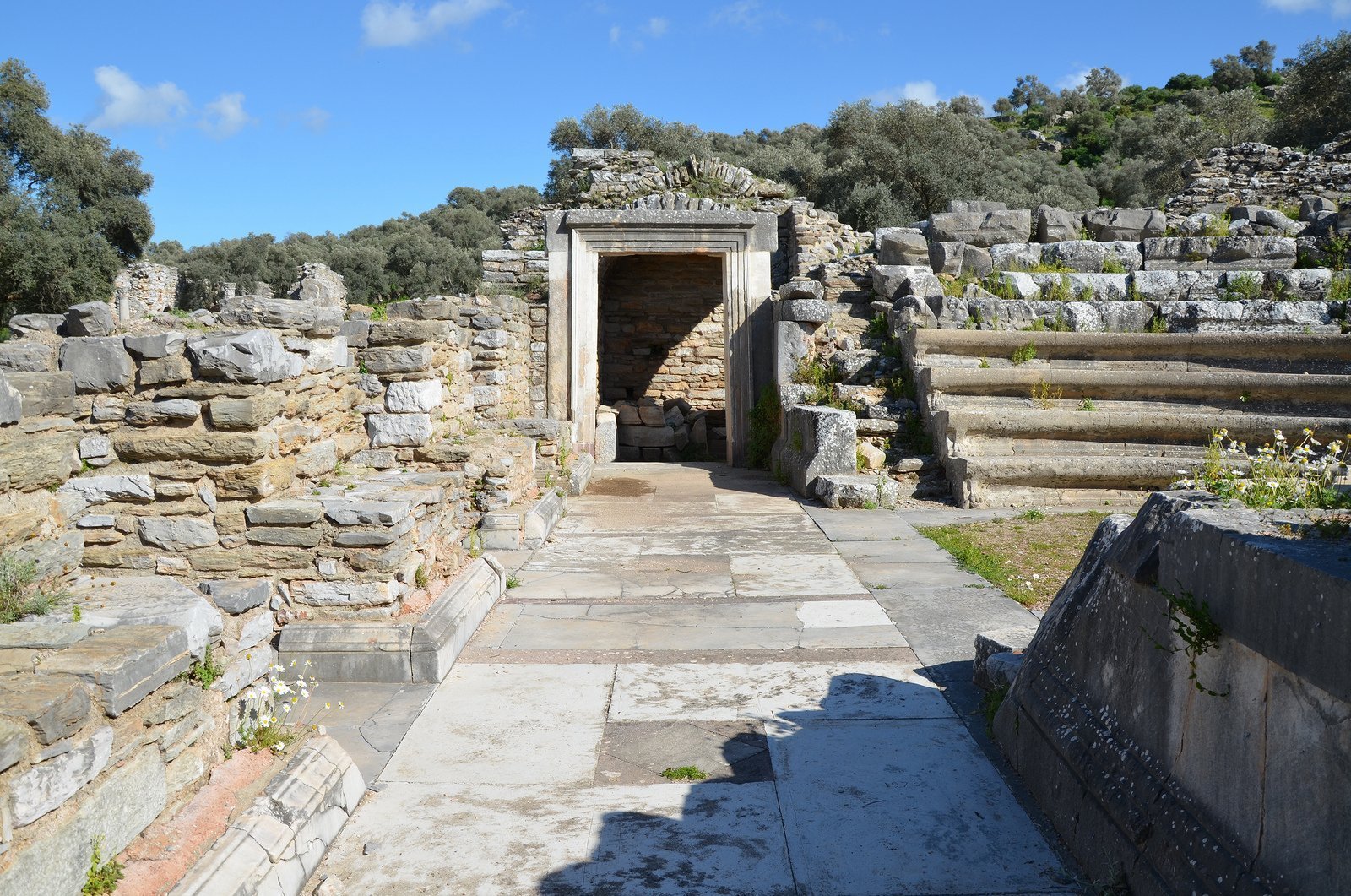 Iassos
Iassos
At the shores of Güllük there is one of the loveliest ruins of the Aegeans shores, Iassos. Rercently, when we went there to deal with a broken gearbox, the owner of the elegant yacht, an old friend of mine, WN, almost whispered to me: “You must see the museum. It is enchanting”. So, before leaving we visited the museum. It was well worth while.
Firstly, in order to enter the museum, you have to pick up the “curator”. Her name is Sibel, and she is to be found at the booth at the entrance of the ruins. She comes with you the walking distance to the “old fishmarket”, which is the museum today. For me as a layman, more than the lovely findings stored in the museum and labeled generously in English, the main attraction is the mausoleion. Yes, in the center of the Hellenistic fishmarket you can find a “small” and beautiful mausoleion. All the time I was in the museum, I spent imagining Alexander’s soldiers bargaining for the fresh catch around the mausolein.
Iassos is a must for the visiting yachsperson. Several fish restauarants are available at the shore. Mind the sunken harbour mole at the entrance. Mind also that the little harbour is especially sensitive to black and gray water.
It is a located on a peninsula, surrounded by sea on three sides, within the boundries of the Kiyikislacik village, at a distance of 28 kms. from Milas. According to the legend, it was founded by arrivals from Argos, and was named after their leader, lassos. There is no mention of lassos in sources dated earlier than the fifth century B.C. The city was originally founded on an island and subsequently, when the isthmus was filled up, it became a peninsula. The significant ruins of the antique city are located on this peninsula. The high city walls, the aquaducts, necropolis and the building called the fish market are beyond the walls. The excavations at lassos revealed that the oldest settlement in the city dates back to the end of the third century B.C.
When Alexander besieged Miletos in 334 B.C., lassos donated a ship to the Persian navy to assist in the defense of the city. Ten years later, Alexander’s armoury at Ekbatan was commandeered by an lasian named Gorges. Another lasian favoured by Alexander was a boy who had the peculiar fate of being loved by a dolphin . In lasos, it was customary for boys to wade into the sea after practicing at the Gymnasium. At that time a dolphin came ashore and carted one of the boys away on its back , eventually bringing him back to the shore. The legend says that Alexander, hearing of this strange tale, summoned the boy to Babylon and appointed him as a priest of Poseidon, the God of the Sea. The lasians were so greatly influenced by this tale that on the coins they minted in the third century B.C. there is an illustration of a boy swimming alongside a dolphin, with his arm thrown over its back.
TJie Agora is reached through an arched gate. The Bouteterion is in the southwest of the Agora. In the eastern corner of the Agora, the building with the dimensions of 17 x 13 meters and with columns in the front is identified as the Caesereon. In the southwestern corner of the Agora, there is the Temple of Artemis Astias. The theatre is constructed on the northeastern slope of the hill at the center of the town. The medieval fortress is located on the highest point of the city and in the town center. The harbour is between the peninsula and the mainland with a length of approximately 850 meters. The tower at the mouth of the harbour is part of the wave-breakers and is from the medieval times. The other tower facing this is demolished. At the time they were used, a chain was stretched in between to prevent entrance into the harbour of undesitable vessels. The Agora within the city was used as a necropolis in the archaic period. There are tombs carved into rocks and house tombs on the slopes to the west of the Roman necropolis.
The most significant tomb in the city is the monumental one from the Roman period, popularly called the Mausoleum of the Fish Market. The restoration of this mausoleum was instigated in 1993 by funds allocated by the General Directorate of Rotating Capital Operations of the Ministry of Culture, and the architectural pieces and works of art, unearthed by the excavations at lassos, are now in exhibit in the galleries restored. The Fish Market Open-Air Museum was opened to the public on 11 August, 1995.
The lassos excavations were started in 1960 by an Italian Archaeological Team, headed by Prof. Doro LEVI and presently presided by Dr. Fede BERTI.



